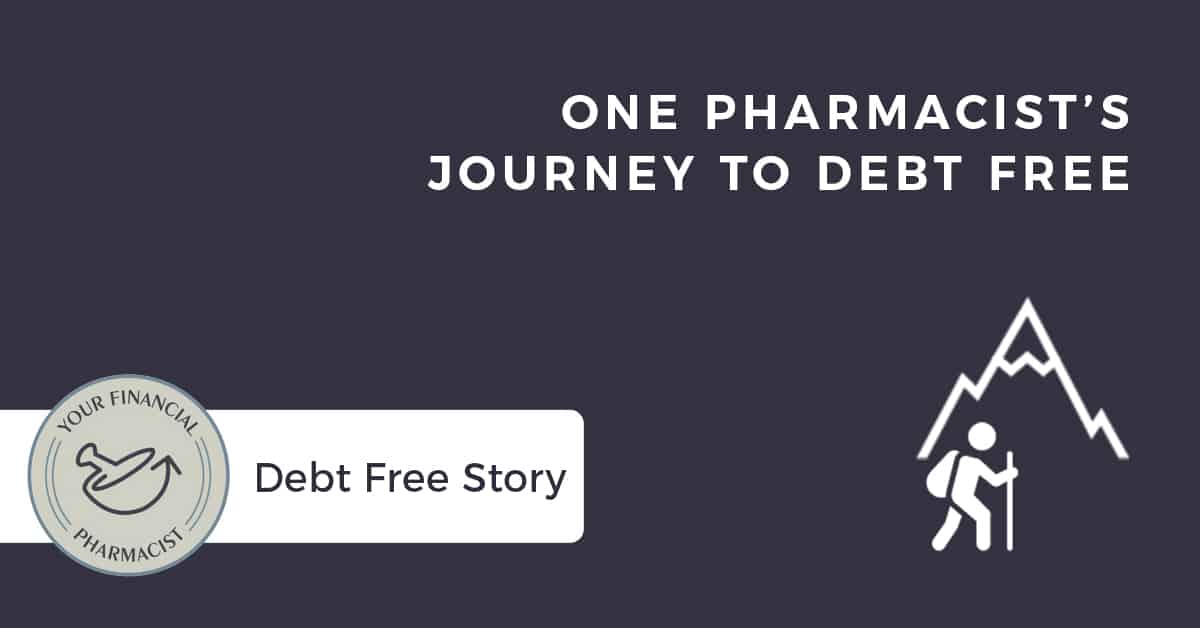The following post was written by Jenna Garlock, PharmD, BCPS. Jenna is an Emergency Medicine Clinical Specialist at Cleveland Clinic Akron General Medical Center. She has an inspiring story about becoming debt free in such a short time from graduation.
Coming out of pharmacy school with thousands of dollars in student loan debt was quite intimidating, especially knowing that I was going to have a resident salary for a year after school. I was fortunate to not have the $200,000 of student loan debt like some, but my loan debt was significant enough to require financial planning to become debt free in a timely manner. Through hard work and dedication, I was able to pay off my loans ahead of schedule in 3.5 years! While paying off my student loans I completed a PGY1 pharmacy residency, paid for part of my wedding, and still had money for a few spectacular vacations. Paying off student loans is very doable, but I would not have been able to do it without a few key concepts, which I have outlined below.
Money Allocation and Distribution
If you want to know the secret to paying off your student loans early listen close…marry an engineer! Your life will soon be a series of Excel© spreadsheets. On a more serious note, if it weren’t for a detailed system of money distribution and allocation I would have never paid off my student loans as quickly as I did. First, I worked with my bank to set up different sub-accounts within my savings account. By doing this I was able to assign the money from my paychecks for dedicated distribution. It is a lot less tempting to make a splurge purchase when your money is already allocated to certain funds than when you are looking at one large lump sum of money. By distributing funds to these subaccounts I was also reassured that I had covered my essentials like bills, insurances, taxes, house mortgage, etc.
Though sometimes tedious, being meticulous with money allocation really decreased financial stress. In order to determine how much money to assign to each subaccount my husband and I set up spreadsheets outlining monthly expenses, wedding expenses, home renovation costs, vacation expenses, and retirement planning. Monthly expenses are necessities, so money was allocated to this first, and the rest based on priorities. Student loan payments were incorporated into monthly expenses, and overpayment was determined by prioritizing “left over” money after monthly expenses were covered. Ultimately, overpayment of student loans is the key to paying off loans ahead of schedule.
Schedule
If planning to pay off your student loans ahead of schedule, it is vital to set and stick to a personal payment plan. My goal was to pay off my student loans in under 5 years, which would require me to overpay each month at least double my monthly payment. There were many times that I wanted to take my overpayment money and buy something different, whether it be for a trip, new clothes or electronic gadget. Though all these items are attractive, the items I wanted to replace were still fully functioning. I realized how paying off my student loans early would allow me to save more for the future, so I stuck to the schedule as planned.
Unexpected income
There are things that come every year such as birthdays, Christmas, opportunities for extra work shift, and tax returns. Usually, these all become a source of unexpected income. Every year I took my Christmas money from grandma and grandpa, money from extra work shifts, and annual tax returns to overpay on my student loans. This was money I was not depending on in the first place, so I treated myself to a couple more months of being student debt free! That was my splurge.
Plan for the future now, even when paying off debt
One of the aspects of life that college does not prepare you for is retirement planning. My husband and I were clueless as to where to even start, so we took a free 4-session class that was offered through his work. The class introduced basic retirement savings concepts, different types of funds, and savings strategies. Saving early was a point that was continually reinforced. For example, assume you have a 6% compounded rate of return. Person A saves $5,000/year for 10 years then contributes $0 for the next 20 years, for a total of $50,000 contributed. Person B saves $0 for the first 10 years then contributes $5,000 for the next 20 years, for a total contribution of $100,000. At the end of 30 years, Person A will have $224,044 and Peron B will have $194,963. The early bird gets the worm! After this class we determined that saving for retirement was as important as paying off student loans, so it was a matter of finding a balance of money allocation. Whatever you do, do not delay retirement saving!
Planning for the Future
Now that my husband and I are officially student loan free there is really no breath of fresh air. Our money just has new allocations like retirement planning, family planning, home improvement projects, and updating cars. Don’t get me wrong, we did take a nice ski trip to Colorado shortly after because that money was no longer dedicated to loan payments. Being student loan free allows you to take advantage of more opportunities in life! Our next big focus is retirement and family planning and setting ourselves up for a successful future.
Through careful planning and dedication, I was able to pay off my students loans ahead of schedule without ever feeling restricted. Hopefully, this gave you some ideas so you can soon be student loan free too!
Join the YFP Community!
Recent Posts
[pt_view id=”f651872qnv”]



